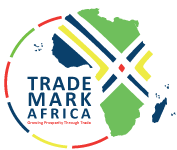Abdul Mohamed is a small business owner based in Dar es Salaam Tanzania. He owns and drives his own truck, which he uses to export plastic chairs to neighbouring Burundi. On Tuesday 9 September 2014 Abdul leaves Dar es Salaam at 7.00 AM carrying almost 2,000 chairs bound for a retailer in Bujumbura, the capital city of Burundi. The following day at 1.00 PM after 30 hours on the road, Abdul arrives at the border post of Kobero, just inside Burundi territory. Abdul Mohamed has been exporting chairs to Burundi for the last three years, a five-day return journey covering nearly 2,400 Km. He has made good time on this journey and he expects to spend up to four hours at the border post before getting back behind the wheel and on the road. But it wasn’t always so. Just four months before, Abdul would have had to make the same journey with two border stops, the first at Kabanga on the Tanzanian side of the border, then at Kobero. The procedure was lengthy. Abdul would, through the services of a clearing agent, declare his goods to the customs officers who would make a physical inspection of his cargo. That could take up to 12 hours as he waited in line with the many other truck drivers who use the central corridor to carry goods inland from the port of Dar es Salaam. Then, having completed that procedure, Abdul would go through immigration procedures before finally being allowed into the...
One stop border posts – contributing to the ease of doing business in East Africa
Posted on: November 20, 2014
Posted on: November 20, 2014




















